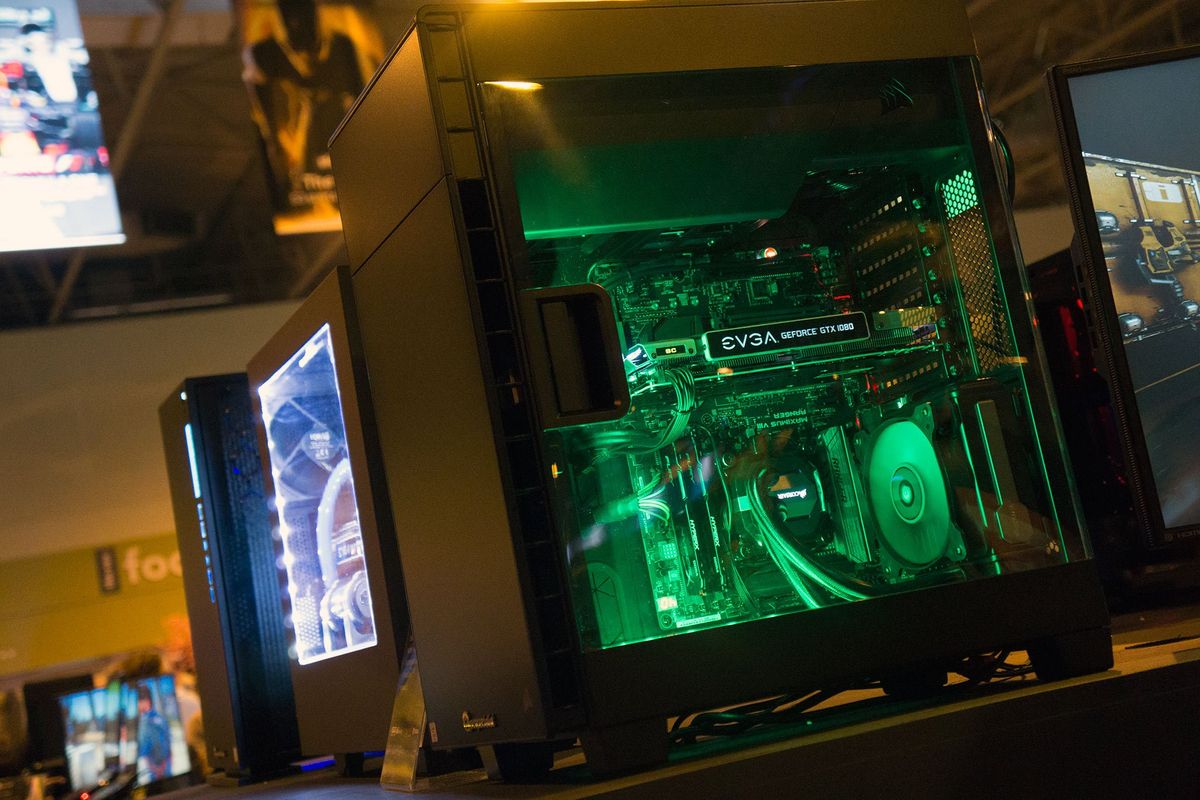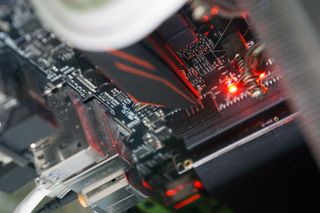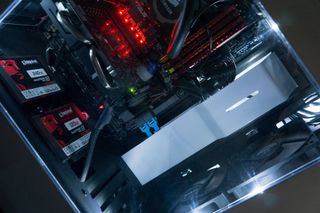Wacky PC-gaming design has gone too far
PC-gaming hardware, including keyboards, mice, graphics cards and motherboards, can look stunning with lighting and unique designs. But there's a fine line between tasteful and bizarre.


PC Gamer's Tuan Nguyen published a piece on PC-gaming hardware and how it needs to grow up. I agree with many of the points raised, though I also have some different thoughts.
Gone too far
Why do I agree with Nguyen that manufacturers of peripherals and PC components need to reconsider how they design products for consumers?
We see this sort of design language through the entire industry. Everything from motherboards, to graphics cards, to monitors, to headsets and more. Instead of making things efficient and comfortable, ridiculous and often useless design language takes a front row seat.
This is where I'm absolutely in line with the argument that something has gone slightly wrong with gaming gear. Manufacturers certainly need to be applauded for research and development. We've advanced from simple desktop towers and bulky laptops to numerous styles and formats. And that's just for mainstream consumers. Products specifically designed and launched for gamers have effectively left this world.
Companies opted to evolve wild designs to set their gaming product lines apart from not only mainstream variants, but also the competition. We now even have RGB connected-lighting effects on the main PCB board. But while this is great news for many who are fans of various effects, has it gone too far? I don't believe so. Should a choice be available, I believe that's excellent news for everyone with regards to a subjective view on whether or not a particular feature or design looks good.
However, Nguyen rightfully pointed out that certain examples of products have gone beyond levels of madness and are now simply bonkers. Two headphone stands were compared, one was as you'd expect. It looked functional and sported a single black color scheme. The other added blue plastic, angular elements, and a claw-like main structure. It's indeed weird how this is now seen as "gamer gear." Why do some products targeting this specific demographic have to be so strange?

I agree with Nguyen that when this sort of design choice negatively affects the performance of products it's a problem. The massive cooler shroud, sporting three fans and LED RGB lighting on the GTX 1070 AMP! Extreme Edition GPU by Zotac is at least functional. The fans effectively cool the board and components, while the shroud, back plate and lighting effects not only add to the visual experience, they don't hamper anything.
Motherboards on-the-other-hand are a whole different experience. It's no secret that the aggressive-looking heatsinks on north and south chips, as well as other parts of a $200 motherboard, are no more efficient than the standard heatsinks one would find on a $40 motherboard. So what gives? Why do manufacturers insist on downgrading cooling for a motherboard to look, well ... cool? Because, unfortunately, there's demand for it.
Get the Windows Central Newsletter
All the latest news, reviews, and guides for Windows and Xbox diehards.
Faster than it looks
I like to think of PC modding as akin to car modding. Generally, you want your car to look the part without spending thousands on a vehicle that has the power. It's why you're seeing a hard push by carmakers in the competitive-hatchback segment to introduce sporty design elements and customizations to entice customers into believing they're investing in a car that goes faster than it does. Trim levels are now available with sporty elements, stiffer suspension, larger alloys, and more without necessarily increasing power output.
PC parts that look more advanced and futuristic are generally considered to be faster, especially when you look at overclocked GPUs and systems. Wondering around the most recent Insomnia UK gaming festival, it was easy to spot interestingly-designed PCs. Seeing just what the owner had installed, if it looks bonkers or is a tasteful design, for example. You could have a case with LEDs installed, some aftermarket all-in-one CPU water cooler and only be running a Pentium processor and R7 265 GPU. It's easy to make your machine appear to be more capable than it actually is.
But your PC looks the part. It looks as good as those that cost big bucks and have insanely powerful systems. That's what sells flashy components.
For mice and keyboards, I am a fan of these "special" designs, even though deep down inside I'm a fan of minimalism. It's good to have different approaches to design, too. Just because I don't like that lime green keyboard with pink LED backlighting and a built-in, 10-inch display for connectivity with supported games, it doesn't mean it wouldn't sell.
I believe it's down to perception and how one can effectively represent hard work and money invested in a system. If you were to look at two identical desktop PCs — one with RGB lighting, angular edging, an overall aggressive design, and the other a mere black unit — which would you immediately assume is more powerful? The one with an interactive light show, correct?

Is it a problem?
I believe certain design choices have a place in components, but manufacturers (and consumers) need to draw a line when it comes to taking things too far. Functionality should never be negatively affected by such inclusions, but everything else is fair game as far as I'm concerned.
So what is PC gaming? It's really simple: gaming means having good graphics and CPU performance to get the best experience out of your games. Gaming means decreased load times and higher clock frequencies. Gaming means optimizing a system to speed up texture loads, and using high refresh-rate displays. It means having low latency and no network lag. It does not mean adding more junk onto PC hardware or making uncomfortable design choices in the name of — ugly — aesthetics.
The same could be said for vehicles. Why have four prominent exhaust tips on the rear with aggressive aerodynamic styling? Because it makes the car look faster. It's the idea that adding a go-faster stripe to your vehicle will automagically add to the engine output. Now, fetch me the vinyl strip for my PC. I need to add 5GHz to the CPU and 3 teraflops to the GPU.
If we want manufacturers to change their ways, it's down to the consumer. Are you with manufacturers (and more importantly the gaming community) with regards to how component design is progressing, or do you value functionality over looks? Are some LEDs and unique elements welcome as long as they don't handicap the more expensive item you're purchasing?

Rich Edmonds was formerly a Senior Editor of PC hardware at Windows Central, covering everything related to PC components and NAS. He's been involved in technology for more than a decade and knows a thing or two about the magic inside a PC chassis. You can follow him on Twitter at @RichEdmonds.